I can’t pin down the last time I went to Galveston. It was sometime in the early 1970s, probably as an appendix to a visit to Houston from San Antonio. Little memory remains, and for whatever reason we didn’t return when I was older. My brothers remember visits in the 1950s, during the time when my parents lived in Houston, but that’s before my time.
I suspect we never went to the Strand on any family visits to the city, because the area, which is a part of the city near Galveston Bay, didn’t begin its revival until the 1970s. The always-informative Handbook of Texas Online tells me that the Strand — formally called Avenue B in Galveston — was included in the original plat of the city in the late 1830s, with the origins of Avenue B’s nickname unknown.
“While the avenue extends throughout Galveston, the Strand has usually referred to the five-block business district situated between Twentieth and Twenty-fifth streets,” it says. “Throughout the nineteenth century, the area was known as the ‘Wall Street of the Southwest,’ serving as a major commercial center for the region.”
Some of the 19th-century buildings still stand on Avenue B, the Strand. With a 20th-century tower to the south.
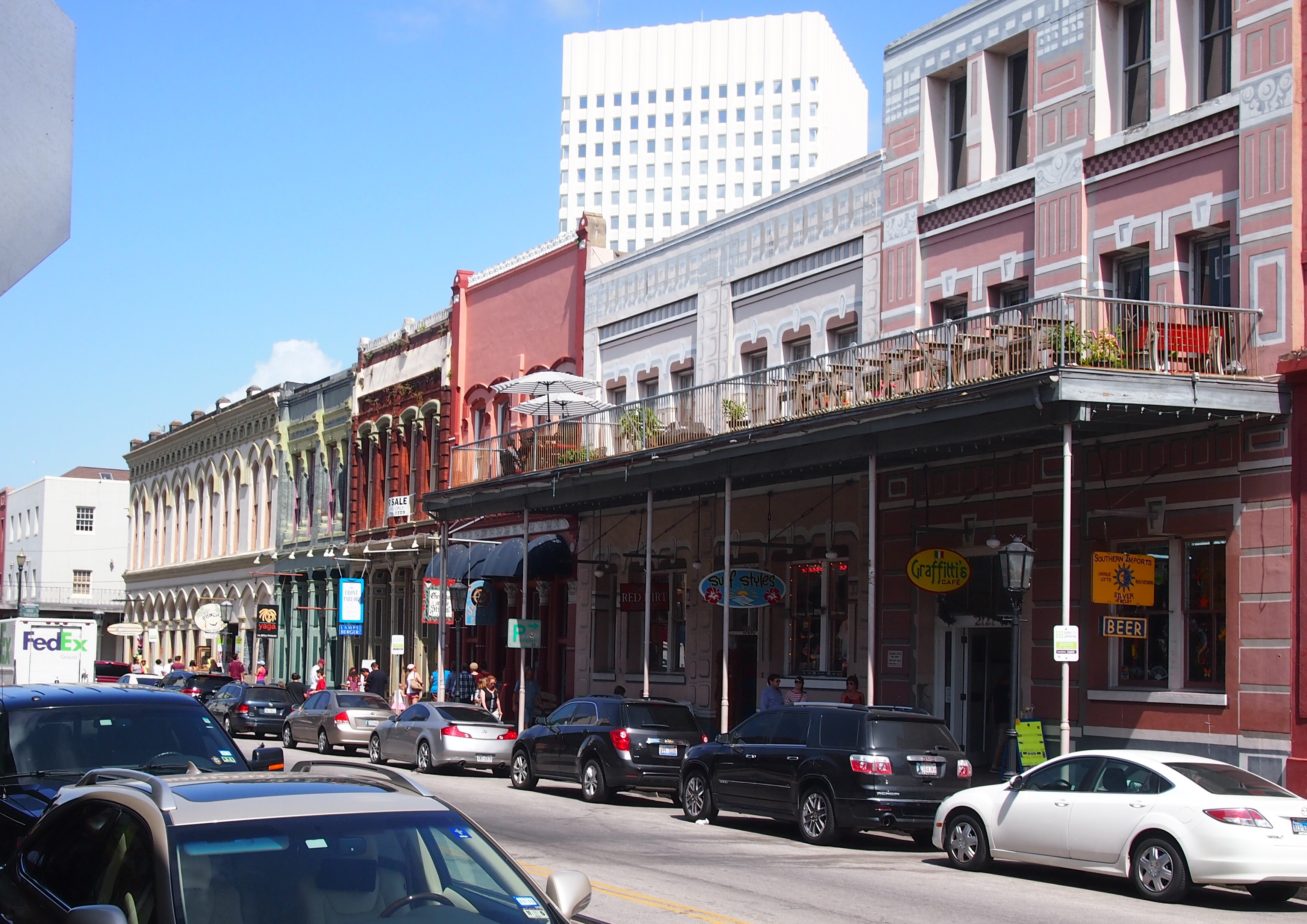
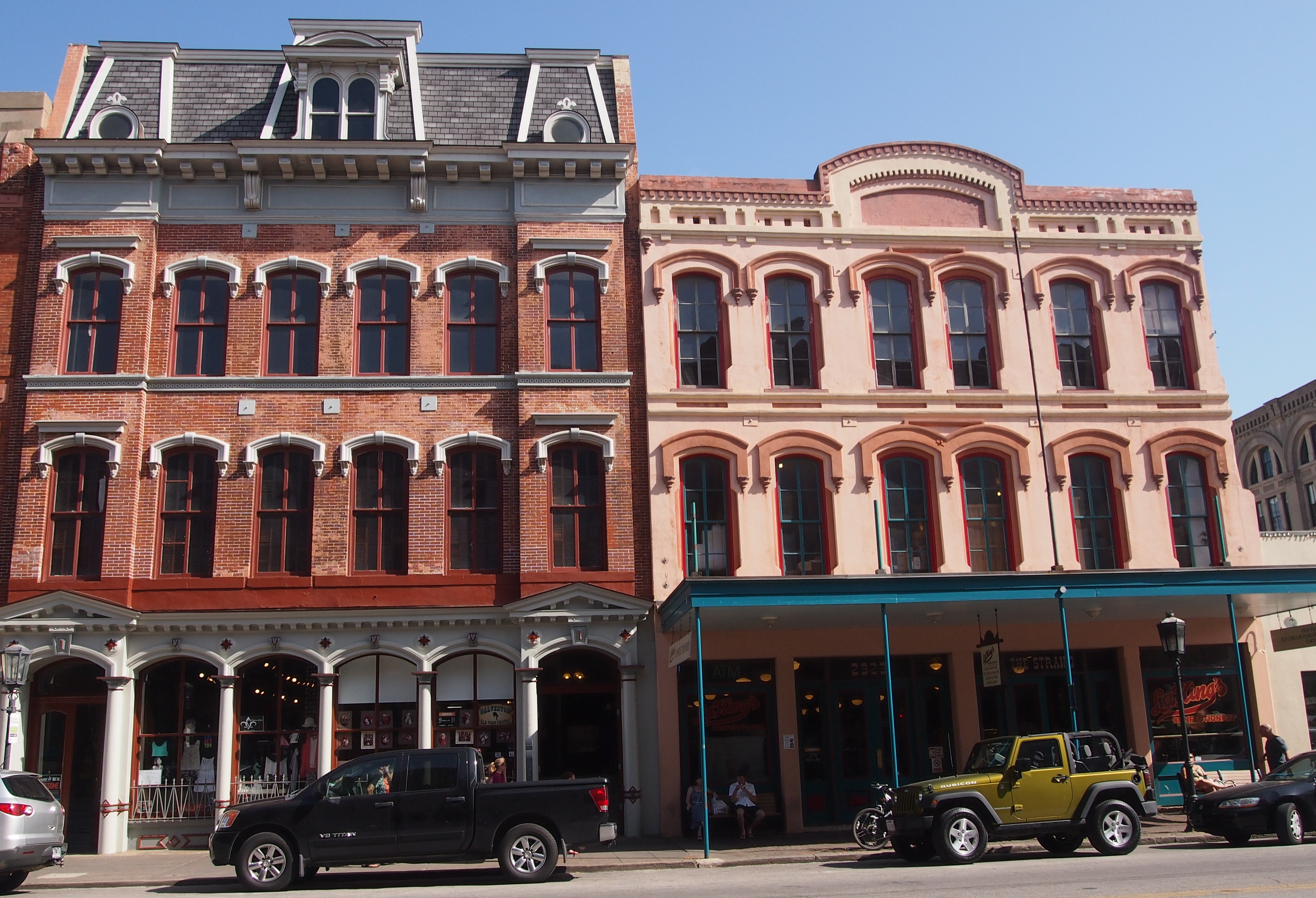
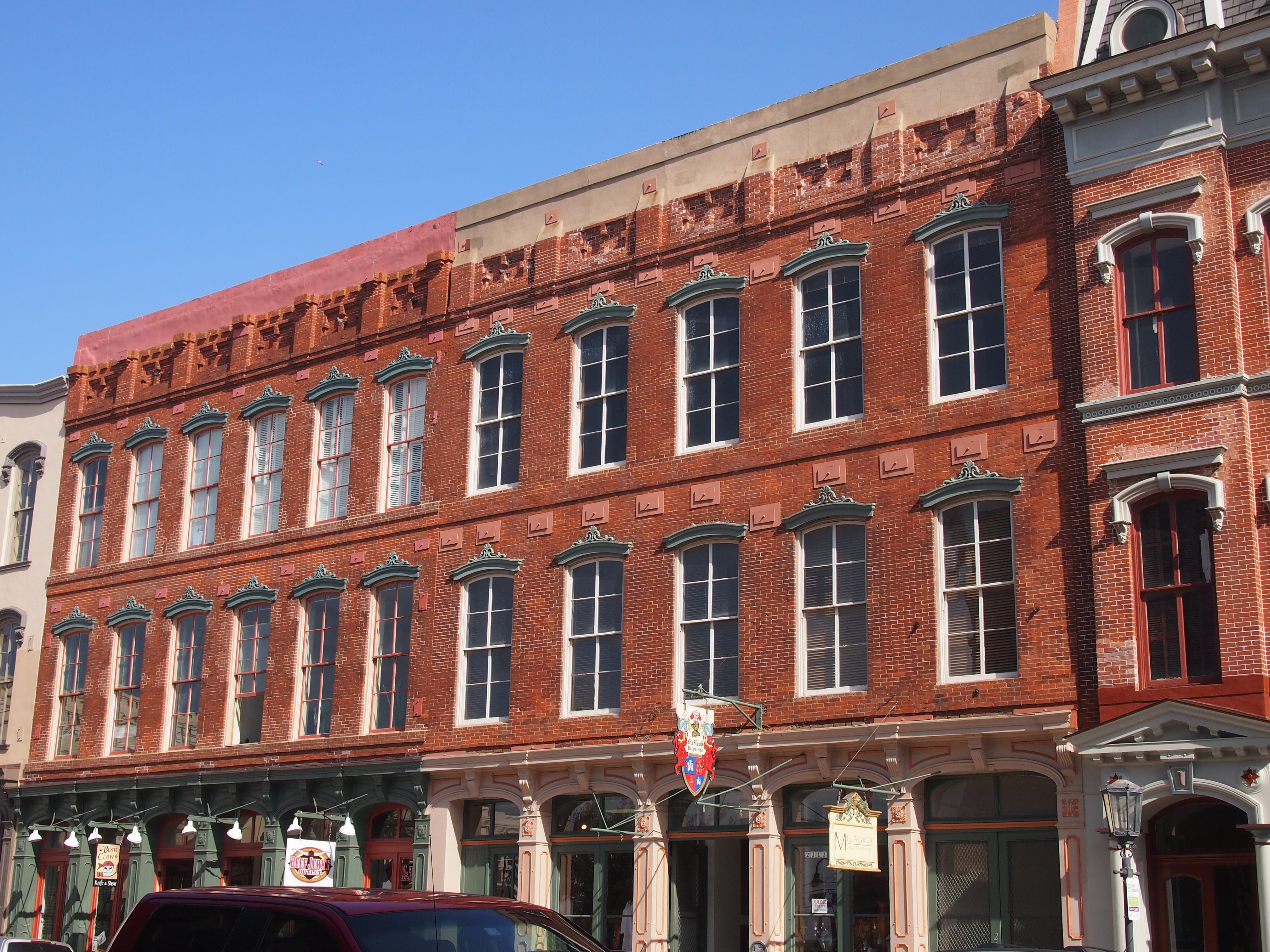 Naturally, the Hurricane of 1900 put the kibosh on the Strand’s career as the Wall Street of the Southwest. I’ll bet after the storm a common enough sentiment among businessmen was, To hell with this, we’re going to Houston. Galveston didn’t have the space to grow into a megalopolis anyway.
Naturally, the Hurricane of 1900 put the kibosh on the Strand’s career as the Wall Street of the Southwest. I’ll bet after the storm a common enough sentiment among businessmen was, To hell with this, we’re going to Houston. Galveston didn’t have the space to grow into a megalopolis anyway.
“In the rebuilding process, businesses moved off the Strand and away from the wharfs,” the Handbook continues. “The area became a warehouse district. In the 1960s amidst widespread deterioration of the Strand, the Junior League of Galveston County restored two buildings sparking interest in the area. In 1973 the Galveston Historical Foundation initiated the Strand Revolving Fund, a catalyst in subsequent years for dramatic restoration and adaptive use in the Strand Historic District.”
These days, the Strand is a Galveston tourist zone, populated by ordinary visitors, and when a cruise ship’s docked near the zone, probably even more people, though I didn’t see any ships nearby when we were there. As a tourist zone, it has two distinct advantages. One, the sidewalks are covered, so that strolling along in mid-summer doesn’t mean walking under a hot and copper sky. Also, the clothiers, geegaw shops and other venues are universally air conditioned.
Ann and I did our share of ducking in and out of shops, eventually buying a single key ring and a few postcards. I can report as a matter of historical interest — that is, for future historians of 21st-century minutiae — that Confederate battle flag-themed merchandise hasn’t died out in the souvenir shops of Galveston as of the summer of 2015, though I can’t say its presence was overpowering.
Sad to say, the eccentric Col. Bubbie’s Strand Surplus Senter has closed. The sign is still there.
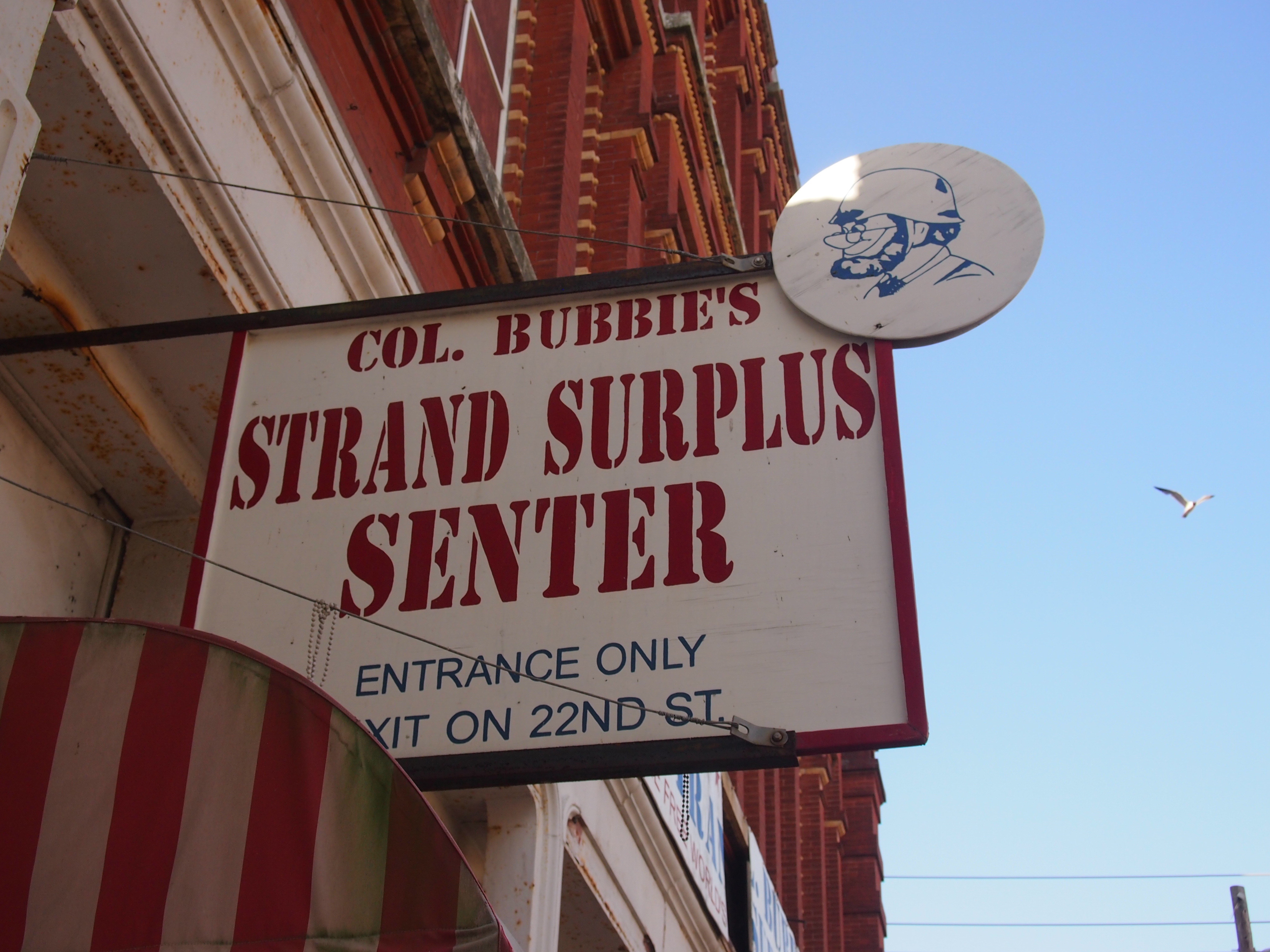 “Col. Bubbie’s was the longest-running, single-owner business on the Strand,” the Houston Chronicle reported last December after the shop closed. “Since 1972, it sold military equipment — gas masks, camouflage pants, canteens, mess kits, medals and insignias, you name it — encompassing 60 countries and conflicts from the Civil War to Iraq.
“Col. Bubbie’s was the longest-running, single-owner business on the Strand,” the Houston Chronicle reported last December after the shop closed. “Since 1972, it sold military equipment — gas masks, camouflage pants, canteens, mess kits, medals and insignias, you name it — encompassing 60 countries and conflicts from the Civil War to Iraq.
“The shop helped outfit the TV show MASH and war films as diverse as Saving Private Ryan and 1941, among others. Until a few months ago it was the go-to spot for local theater productions to get period uniforms, but that stock has dwindled.”
We also stopped in at La King’s Confectionery on Avenue B. We were glad we did. The place makes excellent ice cream. Ann’s pistachio was particularly good. Ice cream jockeys and soda jerks in white were on hand to serve whatever you wanted.
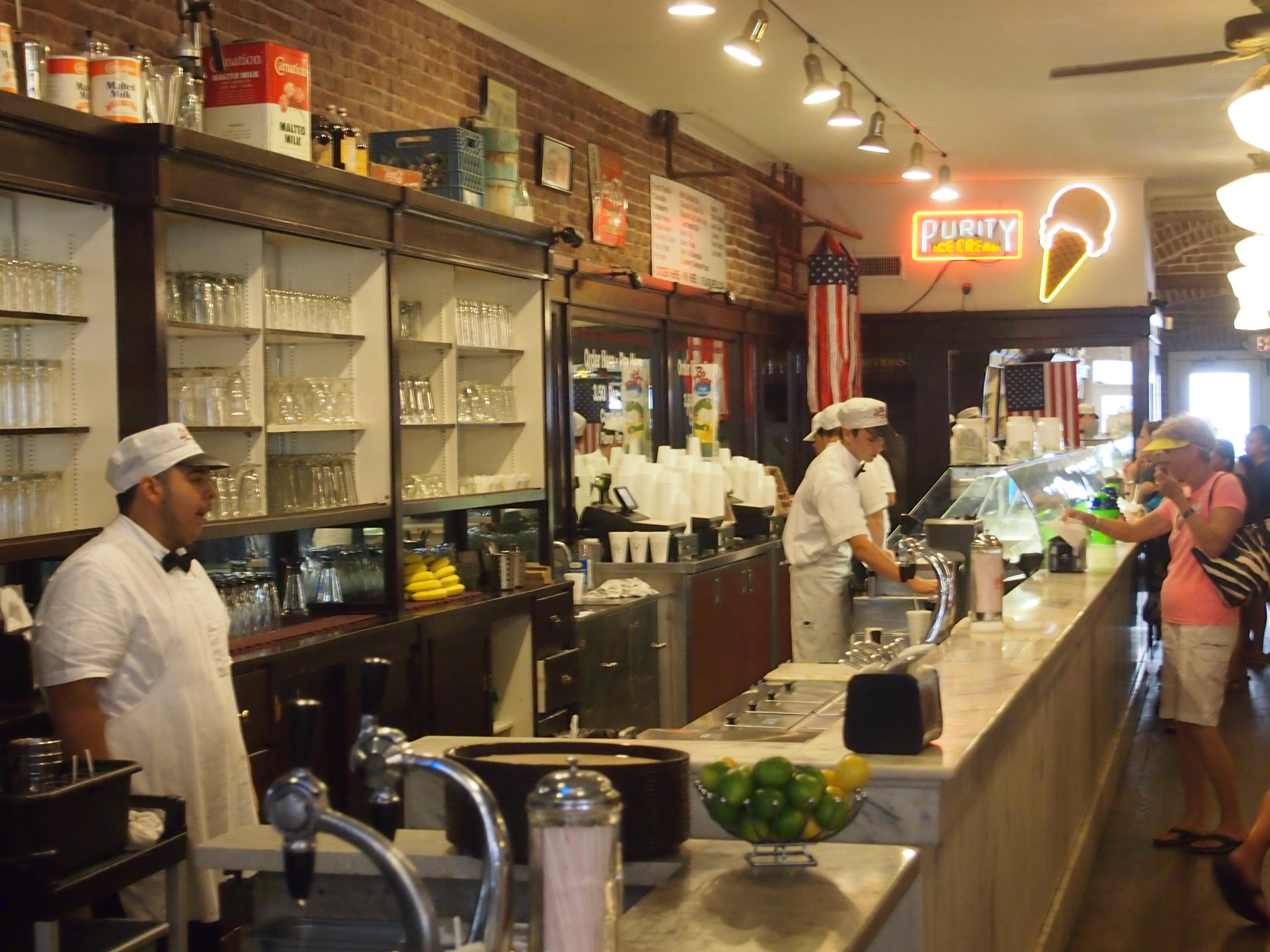 A neon sign says Purity Ice Cream, and I thought that meant a product of Tennessee’s Purity Dairies, but no. According to the Austin Chronicle, “Ice cream on an industrial scale arrived in Texas in 1889 when the Purity Ice Cream Company opened in Galveston.” The ice cream that La King’s serves is a direct culinary descendant of that ice cream, and La King’s is the only place it’s served.
A neon sign says Purity Ice Cream, and I thought that meant a product of Tennessee’s Purity Dairies, but no. According to the Austin Chronicle, “Ice cream on an industrial scale arrived in Texas in 1889 when the Purity Ice Cream Company opened in Galveston.” The ice cream that La King’s serves is a direct culinary descendant of that ice cream, and La King’s is the only place it’s served.
In the back, you can watch a fellow making taffy, which the store also sells.
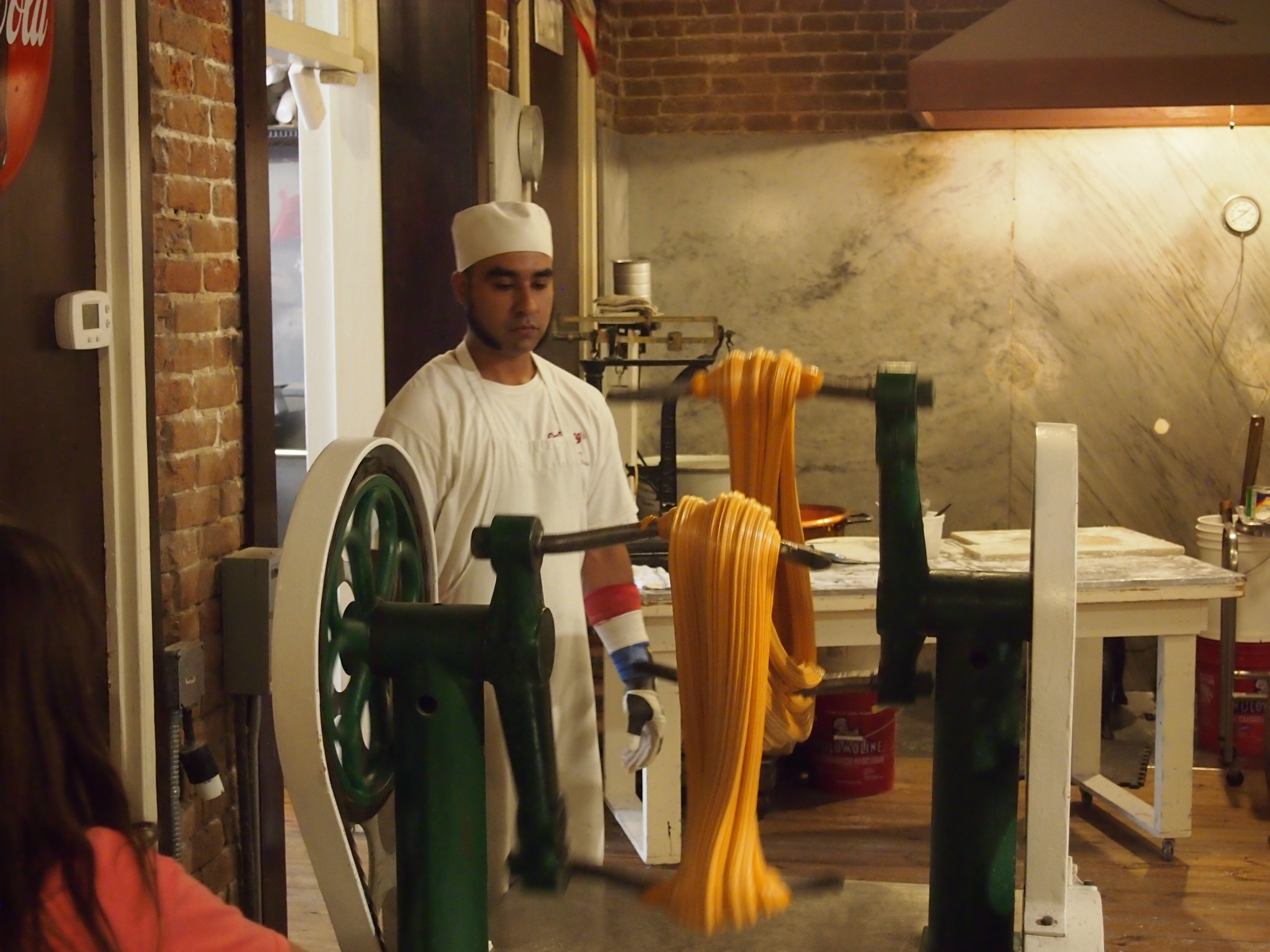 One other thing I spied on the Strand: a public chess set.
One other thing I spied on the Strand: a public chess set.
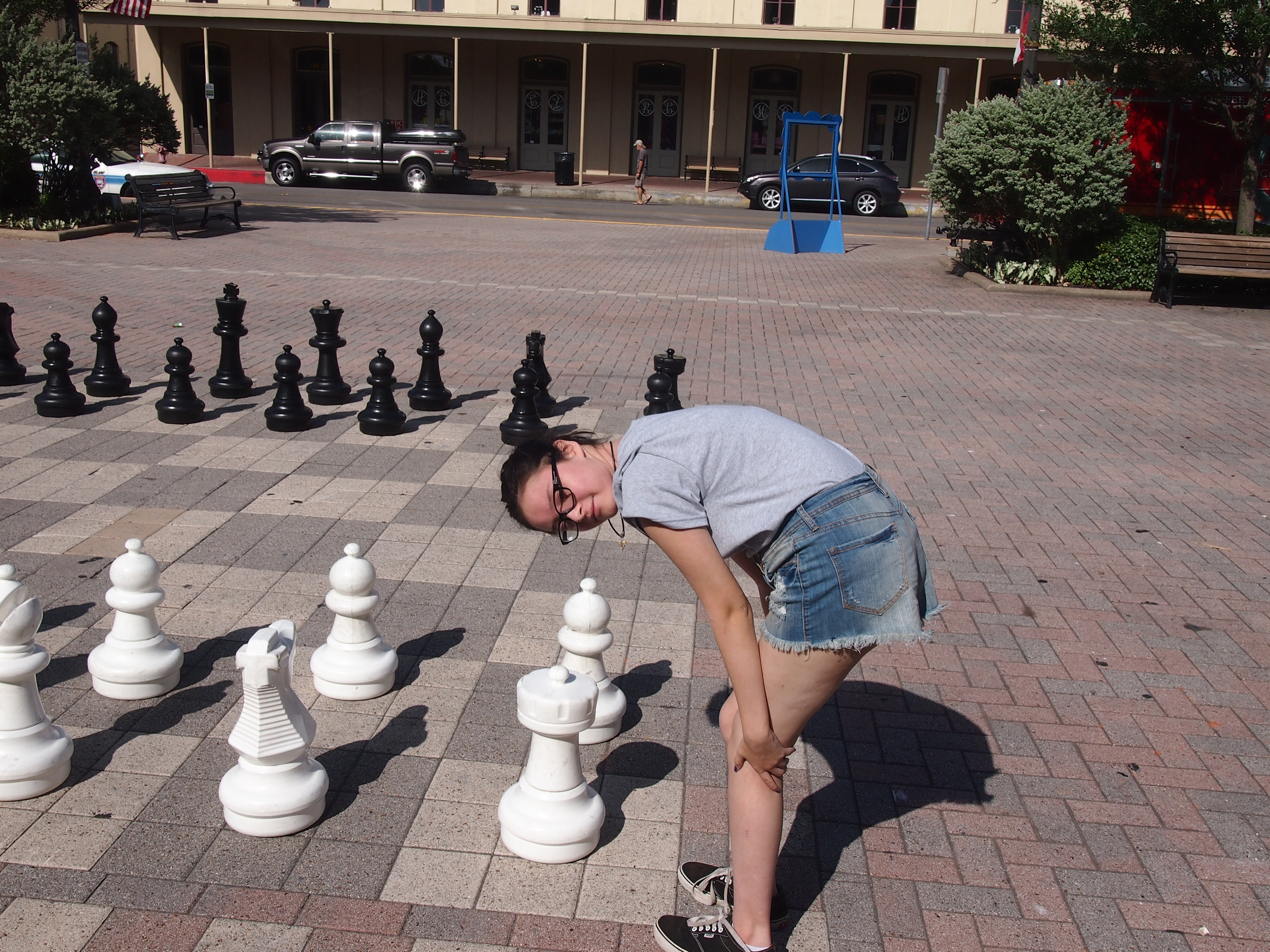 It was a little too hot to play, but still. That’s what parks need more of, public chess sets.
It was a little too hot to play, but still. That’s what parks need more of, public chess sets.